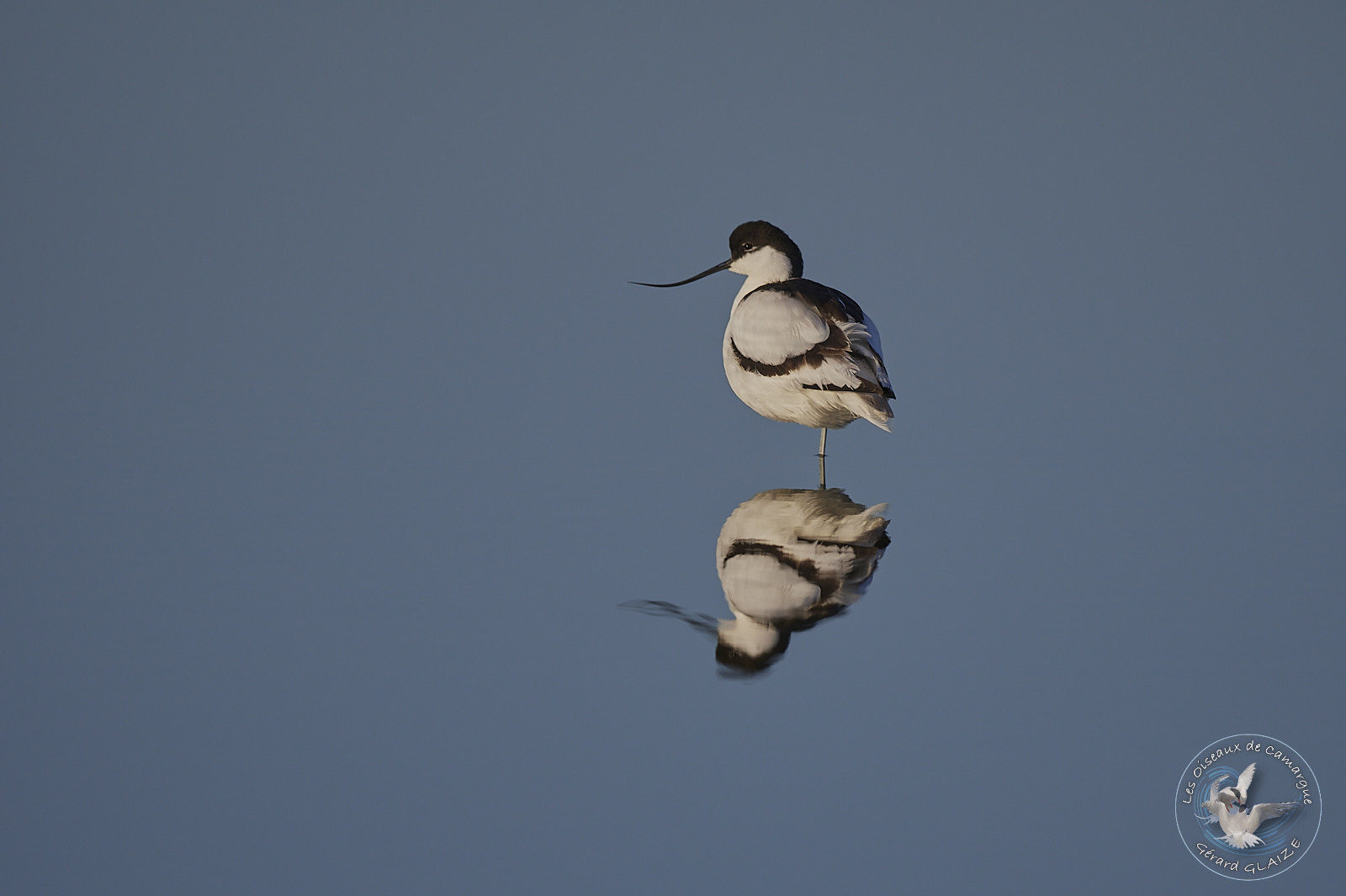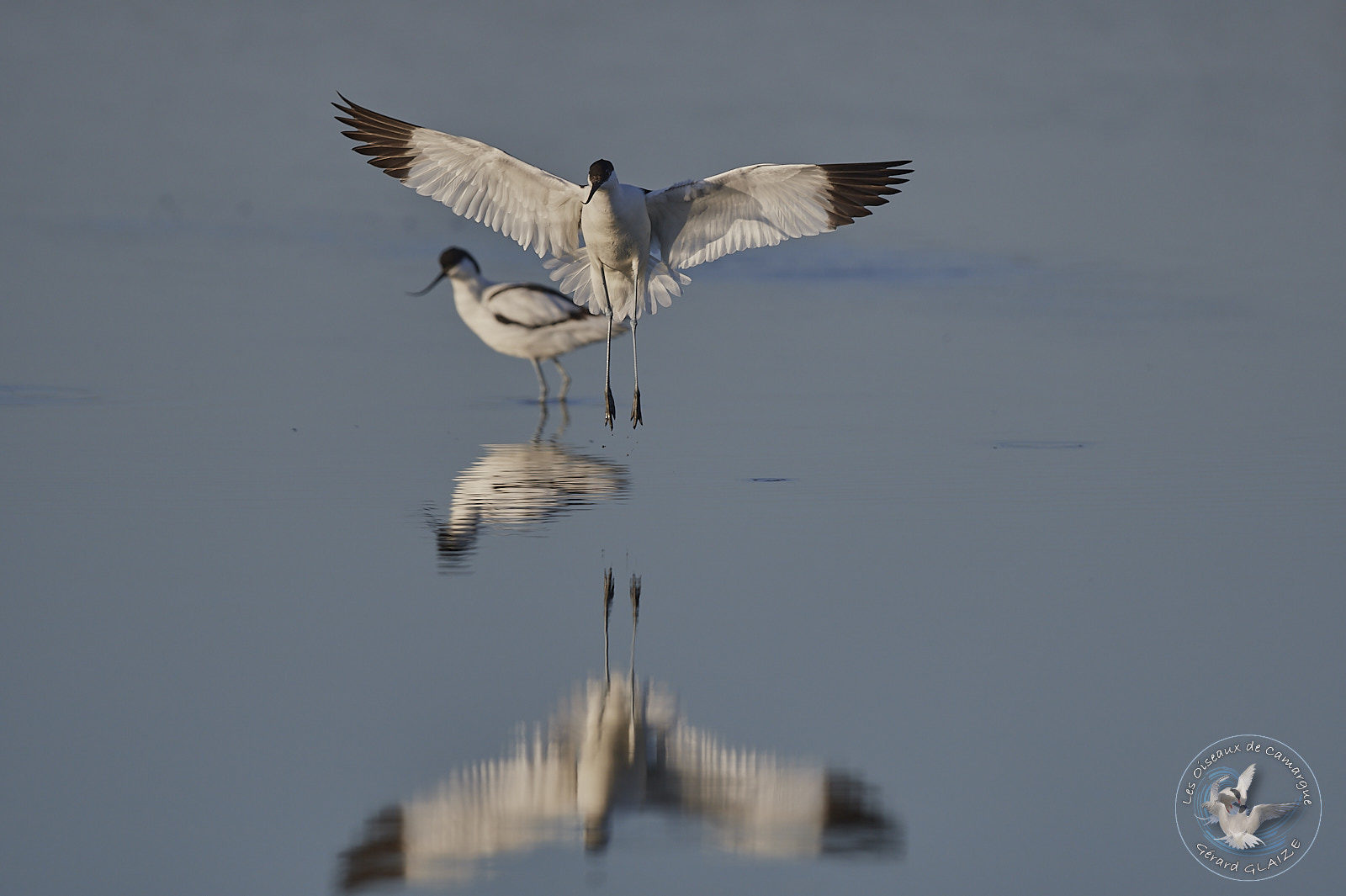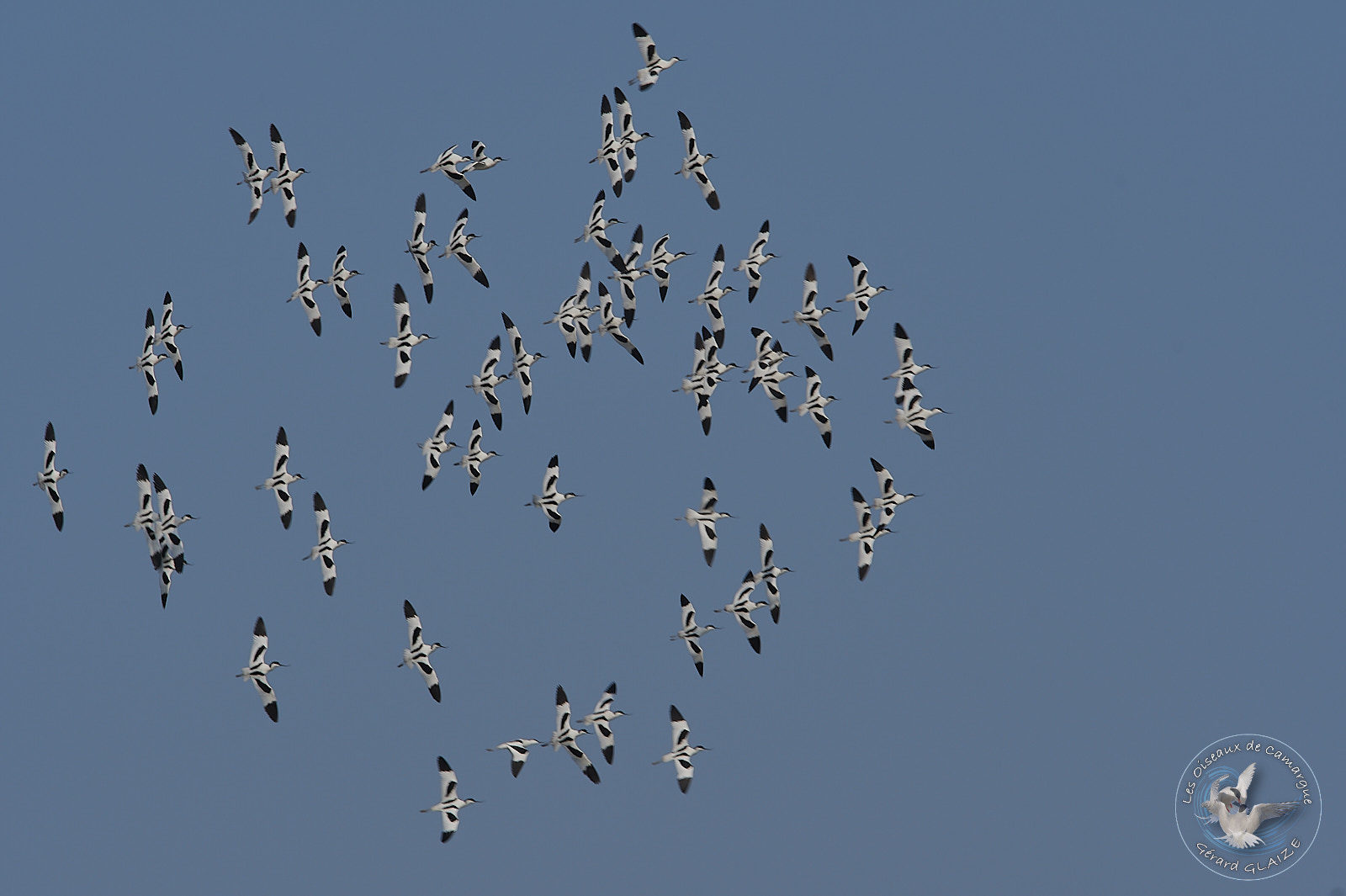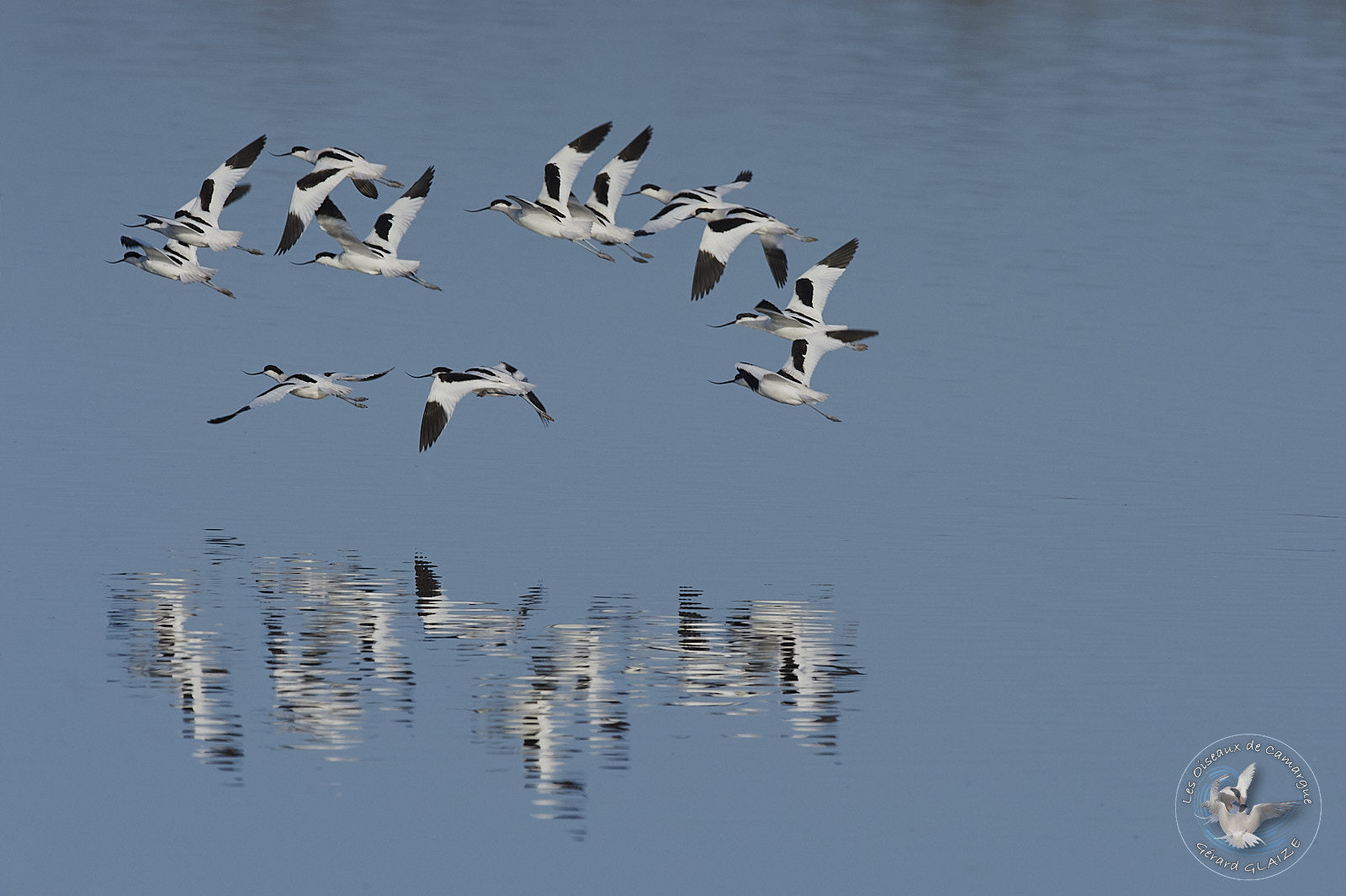Pied Avocet
Last updated on June 21st, 2024 at 05:30 pm
The Pied Avocet well deserves its name and has not usurped its qualifier of elegant. This large wader is easily recognizable with its fine black beak curved upwards, its white plumage dotted with black spots, its gray blue legs, the feet are webbed. Both sexes are similar.
Avocets are gregarious birds. It is very common to see them in groups, on the ground or in flight during migrations. Similarly, during the nesting period, these birds nest together, in dense colonies.
Pied Avocet
Scientific name : Recurvirostra avosetta
Family : Recurvirostridae
Long. de 42 à 46 cm, Env. de 65 à 78 cm
Weight : de 250 à 400 gr
Flight
The flight is direct and fast. The Avocet flaps its wings rapidly. In flight the legs exceed the tail, and the neck is slightly stretched.
Habitat
Its habitat is marine and terrestrial, it likes wetlands, shallow waters, and bare places, salt marshes, lagoons, marshes, mudflats, but also large sheltered bays, especially in winter. The Camargue has favorable habitat areas for it.
Regime Diet
It mainly consumes aquatic insects, worms and small crustaceans living in brackish water. The avocet searches for food in the water, using its curved and very sensitive bill. Its method is original: it half-opens the beak and skims the water on the surface. To do this, it maneuvers the spout back and forth sideways while filtering the food.
Nesting
Pied Avocet performs a complex courtship display, usually in shallow water. The male grooms his plumage while the female leans forward, extending her neck so that her head brushes the surface of the water. The male then flounders here and there in front of her, approaches little by little, then brushes her tail. He finally spreads a wing over the female’s back and mating takes place. Right after, the couple runs side by side for a few meters.
The Pied Avocet nests in flat, open areas, often very close to water. However, the broods are sometimes exposed in the event of flooding. Nesting takes place from April and includes one brood per year. Egg incubation lasts 24-26 days.
Migration
The species is migratory north and east, and most spend the winter in Mediterranean countries, Africa or South Asia. More than 2,500 pairs nest in France and about 15,000 winter there, mainly between Morbihan and Charente-Maritime. Avocets born in the Camargue winter in Spain and North Africa.
Protection
The Pied Avocet benefits from total protection on French territory since the ministerial decree of April 17, 1981 relating to birds protected throughout the territory. It is listed in Annex I of the Birds Directive of the European Union.
Cry
The Pied Avocet utters a clear and relatively melodious contact call, and some other similar sounds. This call is loud and often repeated. In case of danger or threat affecting these chicks, she gives the same kind of call but higher pitched “kloo-eet” or a shrill “krrreee-yu”
Other Links
- You can see the article from my site “Birds of Camargue” for more information on the Camargue and the Birds.























